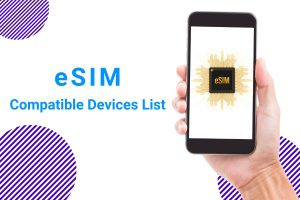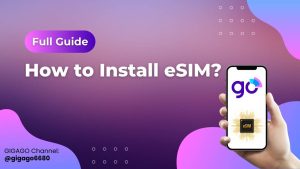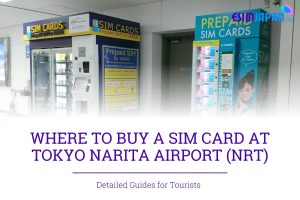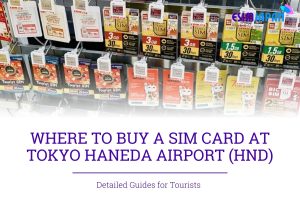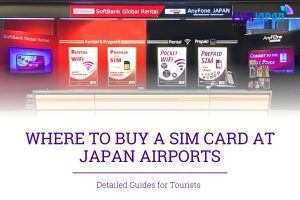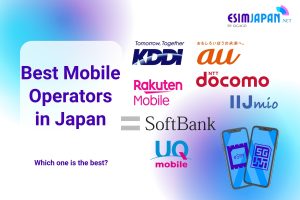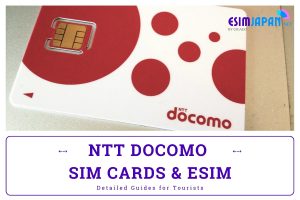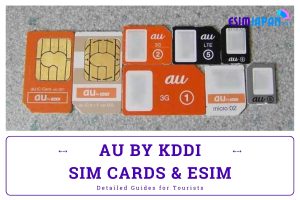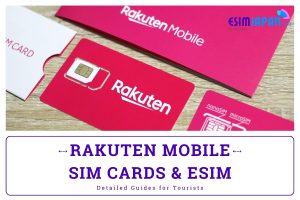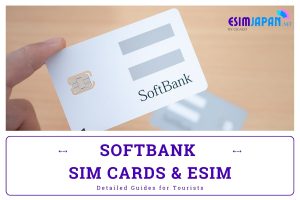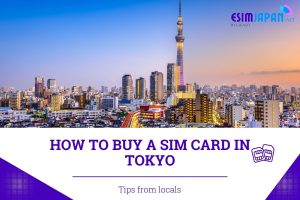Traveling to Japan and need mobile data? Getting a Japan SIM card for your trip can provide convenient access to maps, translation, and more. With many options: physical SIMs, eSIMs, and short-term data plans, choosing the right Japan SIM card may feel overwhelming. Read on for a full guide on which Japan SIM card or eSIM to know where to buy, and more tips for saving money on data in Japan.
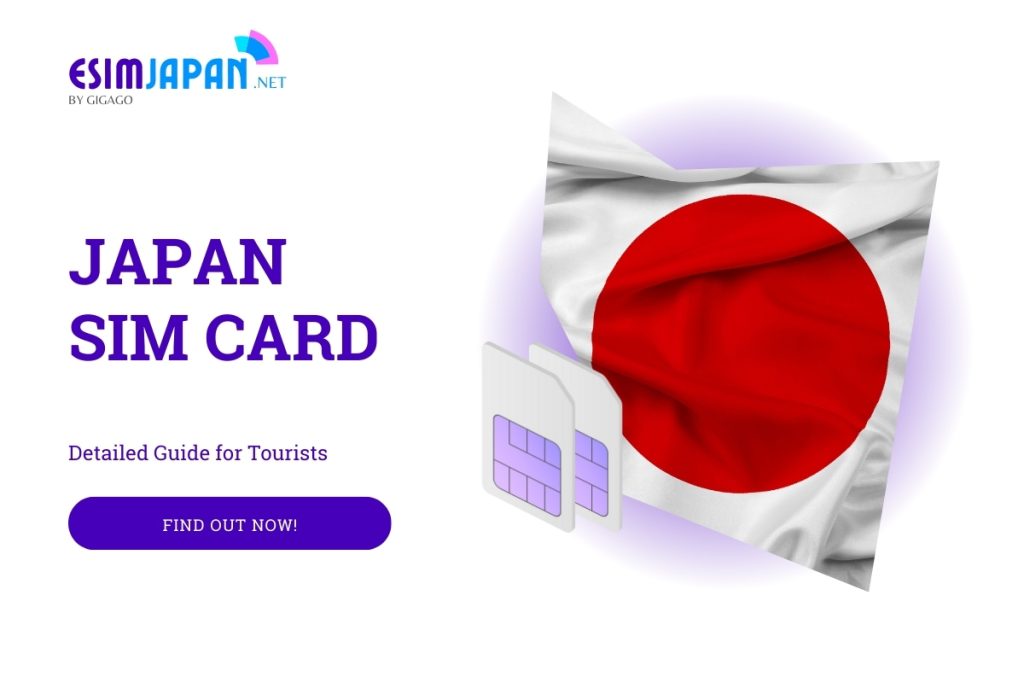
Table of Contents
I. Should I Buy a New SIM Card for My Japan Trip?
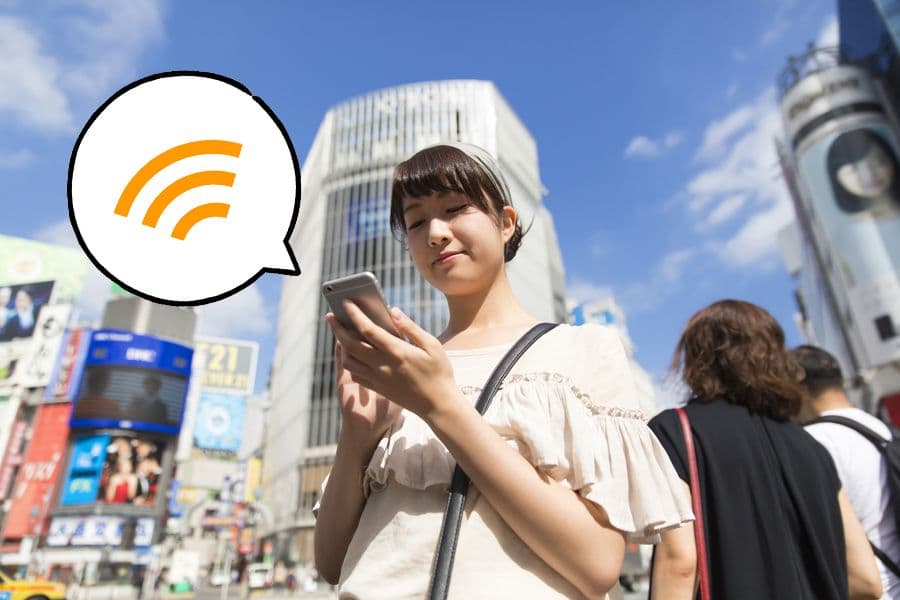
For most travelers, a local Japan SIM card is highly recommended among various mobile internet options in Japan:
- Check how much your home carrier will charge per minute/text/MB of data if you use your regular SIM card in Japan. The rates for roaming in Japan may be very expensive.
- Provide affordable access to essential apps like Google Maps, Uber, transit apps, translations, social media, and calling over data.
- Allow you to create a mobile hotspot. This prevents getting lost and allows information access on the go. Depending on hotels and cafes is risky due to spotty WiFi.
- Useful for independent travelers navigating cities flexibly versus relying on tours.
Even tour groups benefit from looking up info separated from guides. With cheap prepaid options, the convenience of data access outweighs minor setup hassles.
Check that your phone is unlocked and supports Japan's main network bands (700/800/1800/2100MHz) before purchasing a local SIM.
Make sure to obtain a data-only SIM due to regulations for foreigners buying voice SIMs in Japan.
II. Japan SIM Card Types – Which One is the Best for Tourists?
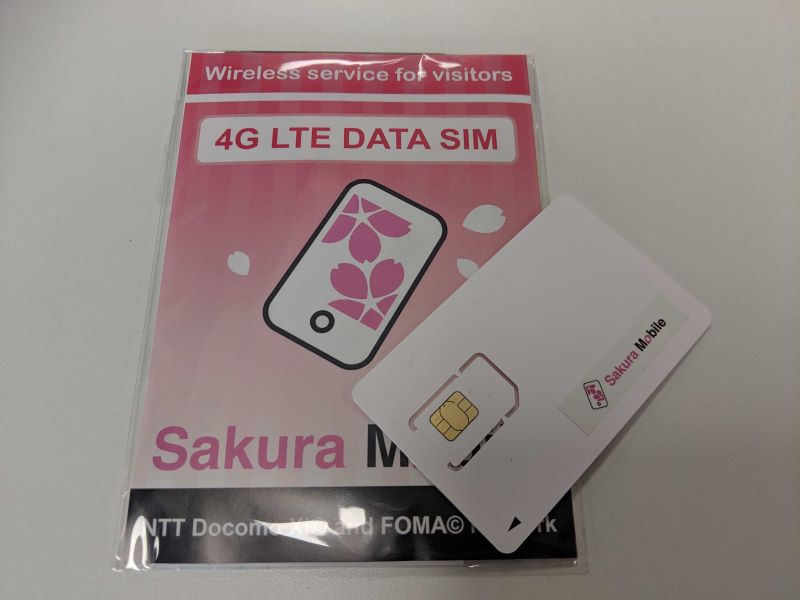
When purchasing a Japan SIM card, you must first decide whether you need a physical SIM or eSIM. Here are the key differences:
- Physical SIM Card: The traditional plastic chip that inserts into your phone. Physical Japan SIM cards can be picked up at stores and airport kiosks in Japan or shipped internationally before your trip.
- eSIM: A digital SIM embedded into your phone. eSIMs are configured through an app by scanning a QR code. eSIMs are convenient since you don’t have to swap out SIM cards, but availability is limited to newer smartphone models.
Most Japan eSIM providers also require installing profiles before departure instead of allowing in-country activation. However, esimjapan.net has rolled out eSIM support in Japan, allowing easy activation after arrival.
Recommendation: If you want internet access, protect your info, and get local call rates in Japan, use a Japan SIM card. But if your device supports eSIM, go for a Japan eSIM for benefits like no roaming charges, convenience, flexibility, seamless connectivity, easy setup, and future-proof travel plans.
III. How Much Data Is Enough for a Prepaid Tourist SIM Card for Japan?
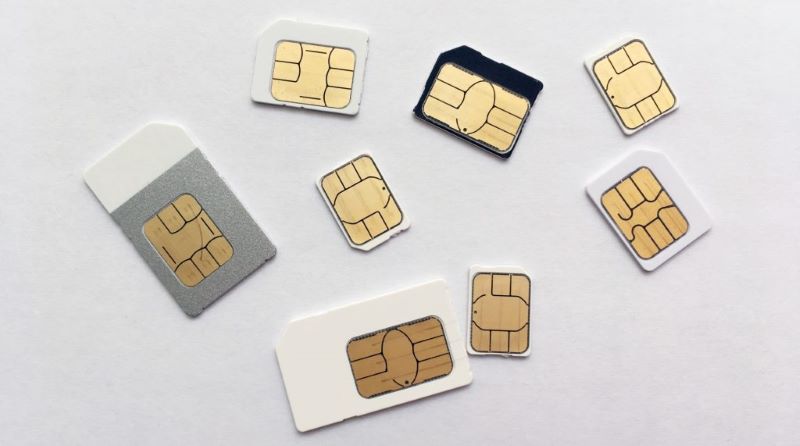
With a Japan SIM card, one of the most important choices is picking the right data amount during your trip length. Here are some general data usage estimates:
- Light usage: 2-3 GB for up to 1 week
- Medium usage: 3-5 GB for 1-2 weeks
- Heavy usage: 5+ GB for 2-3 weeks
Daily use of maps, social media, photos, light browsing, and messaging would use the estimated data. Streaming video uses significantly more. To conserve data, use WiFi when available and turn off auto-play videos/music. Download offline Google Maps and translate phrases beforehand. However, Japan’s top carriers have great coverage across popular areas so don’t stress limits – easily top up 1-2 GB mid-trip if needed.
Tips: Each user will have a different data usage volume. You can check on the data tracking on your device to know how much data you have used in a month to estimate the data volume you need for your trip.
IV. How Much Does a Japan SIM Card Cost?
Cost for Japan SIM cards depends on the data amount, validity length, and network:
- Data-only SIM Card: Typically 400-800 yen for 1 GB. 2-3 GB for a week costs around 1,500-2,500 yen ($10.08 – 16.80).
- Voice + Data SIM: Starts at around 3,000 yen ($20.16) for minimal data and call rates of around 20-30 yen/minute. More expensive than data-only.
- Tourist SIM Card: All-inclusive packages with unlimited data, free calls, and mobile WiFi can cost over 5,000 yen ($33.56) for one week. Offers convenience at a premium.
However, you can find even cheaper SIM card deals like 1-2 GB for under 1,000 yen ($6.72) if you look in the right places and don’t need an unlimited tourist bundle. Overall, a Japan SIM card can realistically be purchased for under 2,000 yen ($13.44) per week including delivery fees.
Some SIM card plans from mobile operators and MVNO that you can refer to for your Japan trips:
| Operator | Plan Name | Data Allowance | Validity Period | Price (JPY) | Price (USD) |
| Bmobile | Data SIM | 1GB | 30 days | 1,980 | $14.58 |
| Data SIM | 3GB | 30 days | 2,970 | $22.02 | |
| COMST | Data SIM | 1.5GB | 30 days | 2,420 | $18.01 |
| Data SIM | 10GB | 30 days | 8,800 | $65.63 | |
| GTN Mobile | Data SIM | 1GB | 30 days | 5,000 | $37.25 |
| Data SIM | 5GB | 30 days | 10,000 | $74.25 | |
| IIJmio | Travel SIM | 1GB | 30 days | 1,990 | $14.79 |
| Travel SIM | 2GB | 30 days | 3,020 | $22.48 | |
| Mobal | Data SIM | 1GB | 30 days | 3,990 | $29.66 |
| Data SIM | 10GB | 30 days | 16,500 | $123.26 | |
| Nippon SIM | Data SIM | 1GB | 30 days | 1,780 | $13.23 |
| Data SIM | 2GB | 30 days | 1,980 | $14.79 | |
| Sakura Mobile | Data SIM | 1GB | 30 days | 4,950 | $36.90 |
| Data SIM | 10GB | 30 days | 26,400 | $197.01 | |
| Wi-Ho! | Data SIM | 1GB | 30 days | 4,980 | $36.93 |
| Data SIM | 5GB | 30 days | 5,980 | $44.37 |
V. Japan eSIM – Alternative to Physical SIM Cards

eSIM offers travelers to Japan a cost-effective way to stay connected. With price points similar to physical Japanese SIM cards, Japan eSIM plans provide the same functionality without the hassle of swapping cards.
For comparison, pocket WiFi rentals in Japan typically cost 4000+ yen (~US$26) per week – much more expensive than an individual eSIM with US$8 per week for your phone.
Mobile data prices do vary by provider and plan type, so be sure to check updated sources for the most accurate information. However, in general, eSIM is one of the most affordable options.
Get ahead of the game by purchasing a flexible Japan eSIM plan online from esimjapan.net today. Installation is seamless – simply receive the QR code via email and activate it with no SIM switching needed. An eSIM ensures you can explore Japan freely without blowing your budget on international roaming or public WiFi.
VI. Where to Buy a Japan SIM Card?
Here are some recommendations as a local guide in Japan on where tourists can buy a SIM card or eSIM and the benefits of choosing an eSIM:
1. Buy eSIM Online
There are many reputable online retailers where you can buy a Japan eSIM. Here are a few of the most popular options:
- Mobal – Mobal offers a variety of eSIM plans for Japan, including plans with data and voice calls. They also offer a physical eSIM card that you can pick up at a location in Japan if you don’t have an eSIM-compatible device.
- esimjapan.net – esimjapan.net sells multi-network eSIM profiles that work on most iPhones and Android devices. Profiles start at $5-10 for basic connectivity. No shipping needed.
Having the eSIM installed before your trip also ensures smooth connectivity on arrival in Japan. Always check your device supports eSIM before purchasing.
2. Buy a Physical Japan SIM Card
For a physical SIM card, some good options to purchase include:
Carrier stores
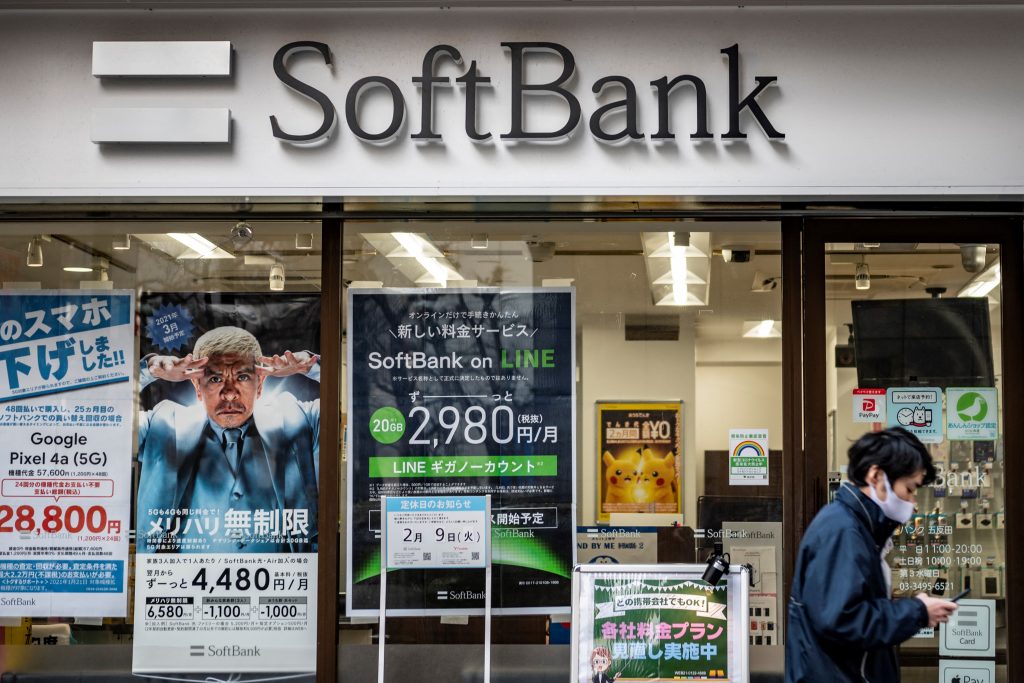
SoftBank is one of the major mobile carriers in Japan and their tourist SIM cards can be purchased directly at SoftBank stores for 4500 JPY (~$30.20). Stores are located across major cities.
Convenience stores
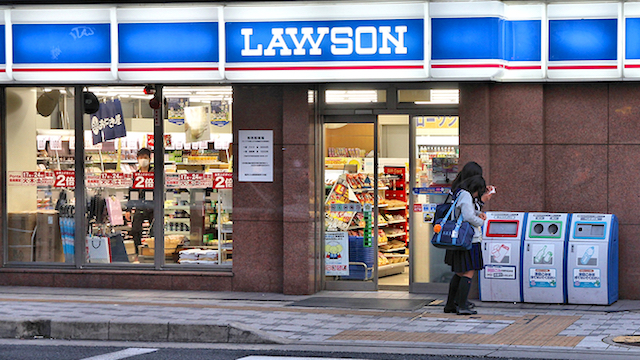
Major convenience store chains like Lawson, FamilyMart and Seven-Eleven sell SIM cards from carriers like bMobile, IIJmio and Sakura Mobile. Look for the mobile phone recharge section.
Airports
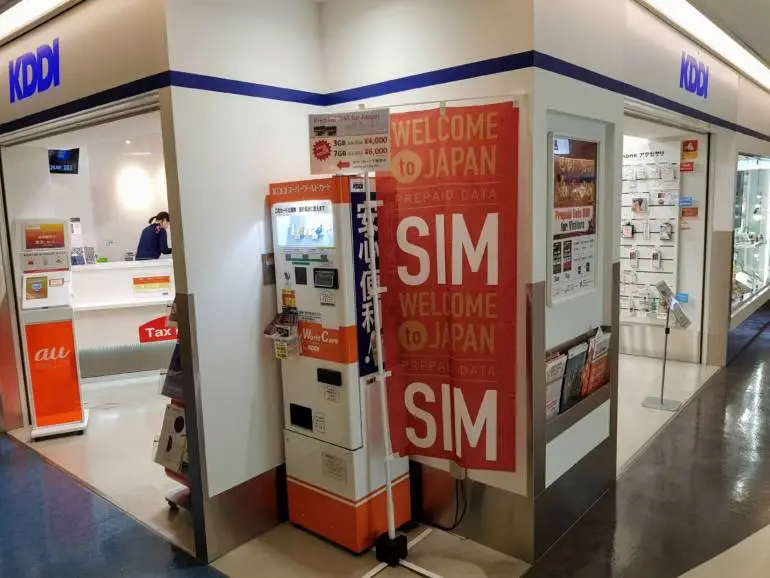
Most major international airports like Haneda Airport (Tokyo) and Kansai Airport (Osaka) have kiosks or stores selling SIM cards upon arrival. This is very convenient for travelers.
Hit the Ground Running
Want to get connected as soon as you land? Learn which airports offer SIM cards to keep you in the know from the moment you arrive.
VII. How to Use Japan SIM
A handy way to stay connected while traveling in Japan is to use a local SIM card. Here’s how to use a Japan SIM card to get you browsing and calling in no time:
- Insert the SIM: Turn off your phone and locate the SIM slot (consult your phone’s manual if needed). Put the SIM card in the slot and turn your phone back on.
- Setting up: There are two ways to set up the SIM, depending on the provider’s instructions:
- Scan a QR code on the package with your phone’s camera. This will take you to a setup webpage with instructions.
- Manually configure the access point names (APN) settings according to the provider’s information.
VIII. Best Mobile Operators for Japan SIM Cards
Each Japanese carrier has its own strengths - click below to read our guide comparing NTT Docomo, KDDI, SoftBank, and more so you can pick the one that's right for your trip:
Here are some outstanding mobile operators in Japan. They have reasonable Japan SIM card and eSIM with various data and validity options:
Mobile Operators in Japan
| Operator | Coverage | SIM Card Price Range | Pros | Cons | eSIM Available? |
| NTT Docomo | Widest coverage across Japan (over 99%) | $23.56 - $53.85 | Fastest network speeds, best coverage, supports VoLTE/WiFi calling | Most expensive | Yes |
| KDDI | Nearly as widespread as Docomo (over 98%) | $23.56 - $47.12 | Competitive network, solid coverage | Slightly more expensive than SoftBank | Yes |
| SoftBank | Broad coverage of over 97% | $10.10 - $33.67 | Cheapest plans generally | Slightly slower speeds than Docomo/KDDI | Yes |
| Rakuten | Coverage of about 98.8% | $6.60 - $20.06 | Very low pricing, unlimited plans available | Newest network, speeds can vary | Yes |
| Bmobile | Runs on Docomo network | $10.10 -$26.93 | Inexpensive Docomo MVNO | Data capped plans | Yes |
| Sakura Mobile | Runs on Docomo network | $13.33 - $33.67 | Good Docomo coverage, flexible plans | Higher pricing than bmobile | No |
| IIJmio | Runs on Docomo network | $6.60 - $23.56 | Inexpensive Docomo MVNO | Data capped plans | No |
This covers some of the top picks, but there are dozens of other Japan MVNOs to choose from. Comparing a few providers with your ideal data amount, network, and SIM card type helps find the right match.
Overall, AU mobile operator is a great choice for tourists when visiting Japan, as it provides extensive coverage throughout Japan, including big cities and remote areas.
AU supports eSIM technology, which means you can enjoy the convenience of a digital SIM card without the need for a physical card. If you want to use eSIM from an AU operator, you should consider services from esimjapan.net, which offers many options to meet the tourists’ needs.
Advice: For tourists, it's highly recommended to choose the mobile operators that offer eSIM plans. It can be a reasonable price with much convenient.
IX. Tips for Saving Data for Japan SIM Card
To reduce mobile data usage in Japan, follow these tips to use your cell phone in Japan and your local SIM:
- Connect to free WiFi whenever possible: Look for WiFi at your hotel, cafes, restaurants, and other local businesses. Parks, transit hubs, and shopping centers may also offer free public hotspots.
- Download offline Google Maps: Save detailed offline maps of Tokyo, Kyoto, Osaka, etc on Google Maps before your trip. This allows navigation without consuming mobile data.
- Enable Data Saver: Turn on Data Saver mode on Android or Low Data Mode on iPhone to minimize background data usage. Disable auto-playing videos and music as well.
- Message over apps instead of SMS/calls: Apps like WhatsApp, Facebook Messenger, LINE, and WeChat offer free messaging without using cellular minutes or SMS allowance. Make calls over data as well.
- Batch photo uploads: Upload photos and videos when on WiFi instead of over mobile data. Avoid auto-uploading every shot you take immediately.
- Download language packs: Download Japanese language packs for Google Translate and other apps while on WiFi before your trip. Translating on the go uses less data.
- Turn off roaming: Keep roaming disabled so your SIM card isn’t unintentionally using data outside Japan which often incurs expensive fees.
Following these tips will help you maximize the value of your Japan SIM card data allowance during your trip!
X. FAQs
Do I need to unlock my phone to use a Japan SIM card?
Yes, your phone needs to be unlocked to insert and use a Japan SIM card. Contact your home carrier to request an unlock before traveling if your phone is currently locked. iPhones purchased directly from Apple are generally unlocked already.
Can I use mobile hotspot with a Japan SIM card?
Yes, you can enable mobile hotspot (tethering) to share your Japan SIM card’s data allowance with other devices like a laptop, tablet, or second phone. This is useful for WiFi on the go. However, beware of additional hotspot fees on some cheaper plans.
Do Japan SIM cards work in other countries?
No, Japan SIM cards only provide service domestically within Japan and don’t offer international roaming. Switch back to your home SIM or get a separate SIM card when traveling outside Japan.
Can I make calls and text with a data SIM?
You can make voice calls over data apps like WhatsApp, Skype, Facebook Messenger instead of regular calling with a data-only SIM card. Texting requires a SMS/call capable SIM card or using data-based messaging apps.
What’s the best Japan SIM card for long-term travel?
For trips over 2-3 weeks, getting a monthly data plan of 10+ GB or unlimited data on a long-term SIM card can provide the best value compared to short-term prepaid SIMs. Many providers offer 1-12 month contracts.
XI. Conclusion
Getting a local Japan SIM card unlocks connectivity convenience and flexibility for tourists. While prepaid SIM card around 2 GB if great for basic usage of short trips, eSIM is very convenient and flexible. With various Japan SIM card options readily available, there’s no reason to visit Japan without the internet in your pocket.
